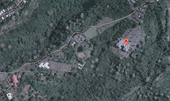FAQ
What testing is conducted at the State Labs?
What are some examples of environmental testing?
What are some examples of public health testing?
Is all environmental testing done at State Labs?
Is any animal work done there?
What would happen if State Labs was hit by a hurricane or bad earthquake?
What happens if State Labs loses power?
Is the facility secure?
Where can I get air quality information?
What contaminants do you look for in air?
Where can I learn more about careers in clinical and public health laboratory science?
What testing is conducted at the State Labs?
Environmental and public health laboratory testing.
What are some examples of environmental testing?
We test beach waters for bacterial contamination, air quality on 4 islands, foods for pesticides or herbicides, law enforcement samples for bioterrorism agents.
What are some examples of public health testing?
Patient specimens during outbreaks of norovirus, influenza, whooping cough. We directly support tuberculosis and sexually transmitted disease control programs.
Is all environmental testing done at State Labs?
No. Much of the environmental testing is conducted by private labs. The State Laboratory Division certifies private laboratories if they wish to perform drinking water testing.
Is any animal work done there?
No. The State Labs do not have an animal handling facility.
What would happen if State Labs was hit by a hurricane or bad earthquake?
There would probably be some minor damage, but the facility is designed for Earthquake Zone 3 (the second most stringent) and to withstand Category III hurricane (111-130 mph).
What happens if State Labs loses power?
We have a 1500 kilowatt/day emergency generator.
Is the facility secure?
Yes. The campus has controlled entry, 24/7 security, digital video recorded surveillance, access control points, and intrusion detection systems.
Where can I get air quality information?
Real-time ambient air quality data website and the Vog Index hotline is (866)767-5044.
What contaminants do you look for in air?
Carbon Monoxide, Lead, Nitrogen Dioxide, Ozone, Particulate Matter (PM10 and PM2.5), and Sulfur Dioxide.
Want to learn more about careers in clinical and public health laboratory science?
Go to this link… LabScienceCareers.com
